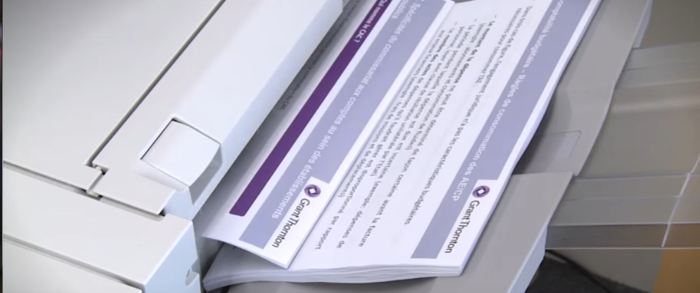Guest blog by Neil Ellett, Vice President, Delivery, Communications & Marketing Solutions, Xerox
A truly global delivery organisation isn’t all low cost and remote interactions. It’s about the right mix of services and people where they’re needed for personalization and local context. If your strategy depends on a global presence, what kind of service partner can best help you at that scale?
Current delivery models tend to be one of two extremes: the classic, first-generation Business Process Outsourcing (BPO) of back-office services to low-cost countries or country-led delivery where key activities such as customer service are owned and replicated across each market. Service delivery iterations swing like pendulums from in-sourcing and near-shoring to robotics and automation that further eliminate human involvement from the equation.
Document Services Evolve with Marketplace
Managed document services (MDS) and related content and marketing operations services have likewise evolved from traditional platforms into broader delivery models. Driving the evolution is the fact that organizations continue to struggle with content conditions like these:
- Separate channels for digital production
- Content from multiple sources
- Local markets recreating content
- Data privacy and handling issues
These situations can occur anywhere in a global organization. How do you bring all your document strategies together to create a more efficient and effective global solution for the business – and for customers? What do you really spend externally for all your content operations? Managers also want reporting and analytics about content use, reaction and performance. So how to deliver all that globally? The key is a competent, innovative services organization that understands the challenges of global content delivery.
An experienced global services provider like Xerox starts with three client expectations:
1. All business is local. Multi-nationals depend on their head office teams, often for global programs, but they also need a local presence in key markets where programs are implemented. Smaller clients want to deal with someone in their time zones and their language. They prefer a partner who understands their business culture.
2. All businesses want the lowest cost. This creates a tension with the point above, when the answer is to off-shore or right-shore delivery to a lower-cost location. Is the lowest cost location the same as the client’s location? If a company goes with the lower-cost off-shore choice, interaction might be impacted. This creates challenges delivering projects that require significant client interaction or solution customization.
3. Some capabilities make sense delivered as shared services. For example, it gets expensive to hire a creative director or instructional design expert in every market you want to serve. The investment might not be justified by local revenues. To deliver on a large scale, your services partner might build centers of excellence in hub countries in the appropriate time zones and serving core languages. The outsourced, shared services approach finds balance between cost and finding, hiring and retaining experience and skills.
For a truly global service delivery organization, the challenge is then to integrate all three expectations into a balanced delivery model. For example, Xerox chose locations in the USA, UK, Spain, Hungary and India for the right mix of skill, infrastructure and cost. Satellite sites in Singapore, the Philippines and a Fuji Xerox joint venture cover Asia Pacific.
How You Benefit from Global Services Delivery
A good global services model scales with growing enterprises that suddenly find themselves needing to expand quickly. Another advantage, assuming you’ve already invested in multifunction printers and digital printers, is that wrapping services around them doesn’t require further huge initial investments, and your services partner can drive more value and utilization from those existing assets. You also invest in workflow for digital communications when you invest in managed document services. In fact, managed services and solutions more than pay for themselves in long-term value, when you connect them with the right workflow and document priorities.
If you’re facing global or even large-scale regional document services needs, it pays to understand the topic at a deeper level. The full answer isn’t just technology and geography. Other people and process considerations include:
- Quality of workflow technology and cross-hub reach
- How to track activity around the hubs
- Interfacing with local billing and invoicing systems
- Easily delivery of output to clients in their languages
- The right leaders for matrix organizations, remotely and across cultures
When you have responsibility for content and document production, internal or external communications, or marketing operations, it’s hard to join the dots and create localization and personalization on a global scale. But it can be done. For example, Xerox recently demonstrated its global content expertise with broad, cross-organizational support for the April 2017 launch of 29 new products. That endeavor required:
- 71,500 person hours of authoring, creative, instructional design and translation effort
23+ deliverables per product – from warranty booklets to engineer training
Each key deliverable in 20+ languages
If you need to learn more about global service delivery, you’ll also find advice in this blog: Eight Tips: What to Look For in Enterprise MPS Delivery Teams.



